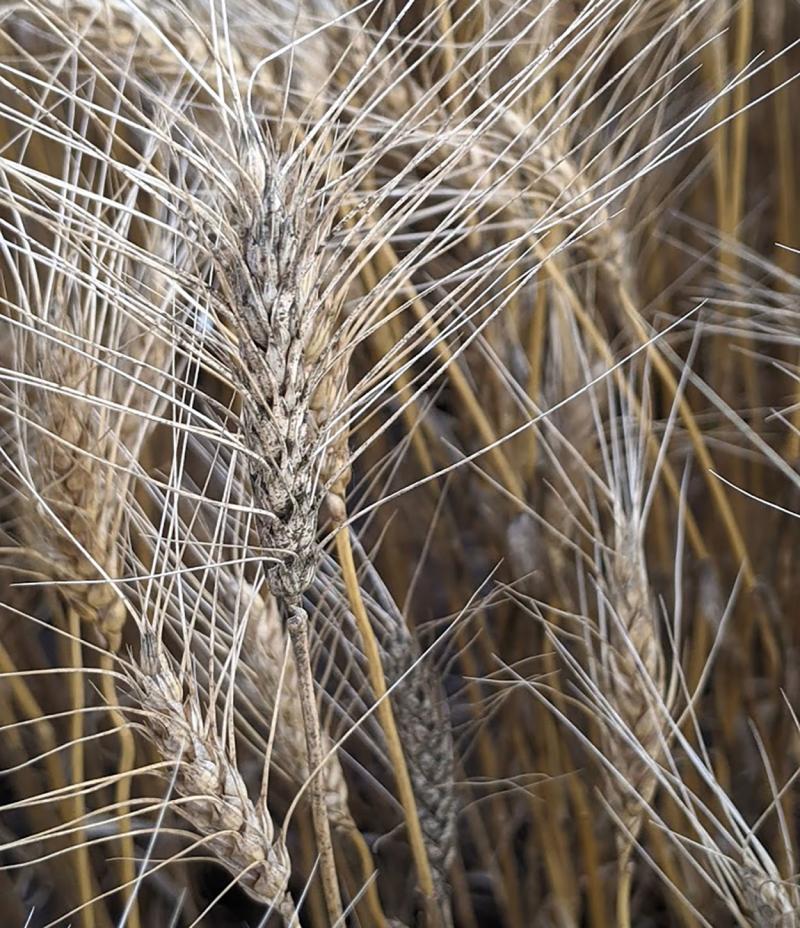
Originally Published: July 23, 2021
Written with contributions by Emmanuel Byamukama, former SDSU Extension Plant Pathologist.
While out crop scouting, sooty mold was observed in some South Dakota wheat fields. Sooty mold (Figure 1) is a saprophyte, which can be easily mistaken for a disease caused by plant pathogens. Saprophytic fungi feed on dead or decaying organic matter and may become a problem, especially when wheat dies prematurely. Sooty mold does not cause the plants’ death or reduced yield.
What It Looks Like/How It Occurs
Sooty mold varies from dark, olive-green to a black color, but other colors may be observed (there are more than one causal fungi). Sooty mold can occur in wheat fields which have died prematurely due to stress from chemical damage, insect pressure (especially aphids), frost, hail other pathogens, such as root rots, or drought. Sooty mold can grow on dead wheat leaves, stems and heads. Now that we have received some moisture, the concern for these saprophytic fungi increases, because it may continue to develop on the unharvested wheat heads. Black point discoloration may occur on infested wheat kernels.
Black point symptoms include the brown or black discoloration of the kernel. Although black point isn’t associated with yield loss, the presence of discolored kernels can result in reduced grain quality.
Management
The best management practice for sooty mold is following best management practices and scouting to minimize plant stress and prevent plant injury, which contributes to sooty mold development. Timely harvesting also reduces chances for continued sooty mold development on the wheat heads. It is important to note that fields with sooty mold will be much dustier during harvest.

